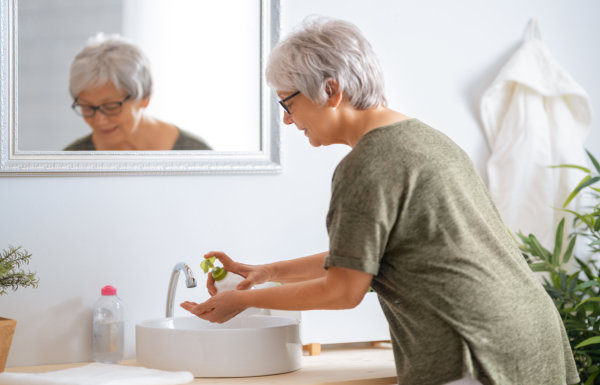. For seniors and individuals receiving home care, it plays a crucial role in promoting overall health and reducing the risk of infections. Illnesses such as colds, flu, and gastrointestinal infections can have serious consequences, particularly for older adults or those with compromised immune systems. We emphasize handwashing as a key component of our care approach. By fostering safe hygiene practices, we ensure that our clients remain healthy, comfortable, and confident in their homes.
Understanding the Role of Hand Hygiene
Handwashing is often underestimated in its ability to prevent illness, yet research consistently demonstrates its effectiveness. Our hands are constantly exposed to bacteria, viruses, and other pathogens that accumulate on surfaces we touch. Without proper hygiene, these germs can easily transfer to our mouths, eyes, or wounds, leading to infections. For seniors or individuals with chronic health conditions, even minor infections can result in complications, hospital visits, or extended recovery periods. Implementing regular handwashing routines provides a first line of defense against these risks.
How Germs Spread Through Hands
Germs are found on nearly every surface we encounter daily. Door handles, smartphones, kitchen counters, and shopping carts are common carriers. When we touch these surfaces and then touch our face, we create a direct pathway for pathogens to enter the body. Children, caregivers, and elderly individuals are particularly vulnerable to these microorganisms due to developing or weakened immune systems. By understanding how germs spread, caregivers and family members can take proactive steps to reduce transmission within the home, protecting everyone in the household.
Proper Handwashing Techniques
Effective handwashing involves more than a quick rinse under running water. It requires a deliberate and thorough approach. Steps include:
- Wet your hands with clean, running water.
- Apply soap and lather all surfaces, including the backs of hands, between fingers, and under nails.
- Scrub for at least 20 seconds—roughly the time it takes to sing “Happy Birthday” twice.
- Rinse hands thoroughly under clean water.
- Dry hands completely using a clean towel or air dryer.
When soap and water are not available, hand sanitizers containing at least 60% alcohol can effectively reduce the number of germs on hands. However, hand sanitizers should not replace regular washing when hands are visibly dirty or greasy, as they cannot remove all types of pathogens. Teaching these techniques to both clients and caregivers ensures that everyone in a home care setting maintains optimal hygiene.
Hand Hygiene in Home Care Settings
In home care environments, proper hand hygiene is critical for both clients and caregivers. Caregivers assist with daily activities such as bathing, meal preparation, medication management, and mobility support. Each interaction presents potential exposure to germs. By incorporating handwashing into routine care practices, caregivers minimize the risk of infection transmission. Our staff receives comprehensive training on hygiene protocols, including handwashing before and after client interactions. This commitment not only protects the health of our clients but also ensures a safe working environment for caregivers.
Benefits of Handwashing Beyond Infection Prevention
While the primary purpose of handwashing is to prevent illness, it also contributes to broader wellness outcomes. Consistent hygiene practices:
- Reduce the likelihood of antibiotic use by preventing infections before they start.
- Promote overall immunity by lowering exposure to harmful pathogens.
- Encourage healthy habits that can be adopted by the entire household.
- Support a cleaner living environment, reducing allergens and irritants.
For seniors or individuals with chronic conditions, these benefits are particularly significant. Healthy routines can improve quality of life, reduce fatigue caused by illness, and maintain independence for longer periods.
Educating Family Members and Caregivers
Education is a critical component of maintaining hygiene in home care. Family members and caregivers must understand the importance of handwashing and model correct practices consistently. Simple reminders, visual guides, and scheduled hygiene routines can make handwashing a regular habit. Encouraging clients to participate in their own hygiene when possible also promotes independence and self-care skills.
Creating a Hygiene-Friendly Environment at Home
Beyond personal handwashing, creating a hygiene-friendly home environment further supports wellness. Regularly cleaning high-touch surfaces, providing accessible handwashing stations, and supplying soap and hand sanitizer in multiple areas are practical steps. Homes that prioritize hygiene reduce the likelihood of infections spreading among family members and visiting caregivers. We emphasize these measures as part of our personalized care plans, ensuring that each home setting supports optimal health and safety.
Take Action for Healthier Living
Handwashing is a simple practice with profound effects on health. Preventing illness starts with clean hands, and consistent hygiene habits can significantly reduce the risk of infections. We are committed to delivering high-quality care that prioritizes hygiene, safety, and wellness for our clients. Our trained caregivers not only assist with daily needs but also implement essential health practices that protect both clients and families.
Protect your health and the well-being of your loved ones by making hand hygiene a daily priority. Contact us at One By One Home Care today to learn more about our services and discover how our team supports safe, healthy living in the comfort of your home.



Leave a Reply